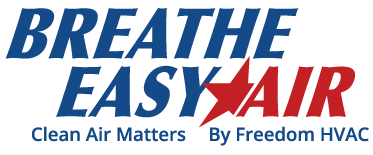While individuals can do little about outdoor air quality, many can do something about the indoor air quality of their homes and businesses.
And IAQ – indoor air quality – is a growing concern for owners of new homes and older homes alike.
“Consumers have IAQ problems and are trying to find solutions. The number of people suffering from asthma or allergies, and those dealing with structural problems associated with humidification, such as wood floor damage, are raising concerns,” said Mike Rimrodt, marketing director, Aprilaire.
Achrnews.com says statistics back up Rimrodt’s concerns: One in 12 people (about 25 million, or 8 percent of the U.S. population) had asthma in 2009, compared with one in 14 (about 20 million, or 7 percent) in 2001, per the American Academy of Allergy, Asthma & Immunology.
Similarly, 55 percent of the U.S. population tests positive to one or more allergens, per WebMD.
“Homeowners are becoming increasingly aware of issues related to IAQ in their homes,” said Chris Willette, president of Fresh-Aire UV, a division of Triatomic Environmental Inc.
Connectivity is key
As consumer interest and awareness rises, so, too, does the need for interconnectivity among devices in the home. Smarter products have become a key aspect of the HVAC industry as a whole, and IAQ products are certainly following the trend in that regard, said achrnews.com.
Kevin Graebel, director of product marketing, Honeywell Intl. Inc., said connectivity continues to be the largest trend in both IAQ and residential home comfort.
“Giving homeowners the ability to access and control their comfort via an app is an incredible user experience, and the connectivity offers advantages to contractors, as well,” said Graebel. “For example, ventilation is a major topic, especially as it relates to meeting building codes. As homes continue to get tighter, it’s important to use ventilation to bring in the fresh outdoor air. However, this can also create excess load on the HVAC system if the fresh air is brought in during the hottest or most humid parts of the day. Honeywell’s new WiFi VisionPro IAQ uses the Honeywell Total Connect Comfort app to pull in outdoor weather data, so the system can do high-temperature and humidity lockouts for ventilation without needing to run extra wires outside.”
The need for cost-effective, high-performance devices that reduce the worry caused by harmful airborne pathogens is a major driver for innovation.
Jay Ayers, geothermal and IAQ product manager at Ingersoll Rand, said more and more IAQ products are communicating through connected controls.
“Consumers are enjoying the ability to remotely monitor and change settings with a smart device,” said Ayers. “Wi-Fi technology and accurate, less-costly sensors are being integrated into IAQ products much more frequently. Any new IAQ product Trane brings to its portfolio will have the ability to communicate using the Nexia protocol.”
More changes ahead
A new industry rule, called ASHRAE Standard 62.2, will soon have a big impact on indoor air quality and changing views of IAQ’s importance.
“Until ASHRAE 62.2 changed in 2013, builders were able to meet the ventilation requirement by using only bath fans, kitchen hoods, and other dedicated exhaust systems,” Ayers told achrnews.com.
“The assumption was that enough infiltration air came into a house through open doors, windows, and natural air leakage. When the 2013 version of the standard is adopted throughout the country, which usually takes about three years, no longer will that infiltration assumption be allowed,” he said. “Builders will be required to install some means of controlled mechanical ventilation to meet the code.”
Homes will continue to be built tighter and tighter, which, according to Rimrodt, is largely associated with energy savings.
“ASHRAE 62.2 sets a requirement on the amount of ventilation homes need,” said Rimrodt. “We’ve designed products that very effectively deliver ASHRAE ventilation rates. We use the HVAC system to precondition the air before it enters the house.”
Read more at http://www.achrnews.com/articles/131312-capitalizing-on-iaqs-soaring-popularity
